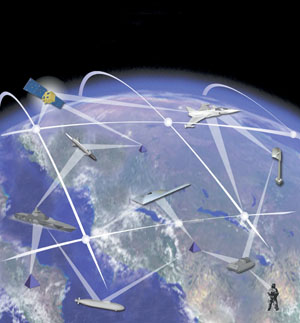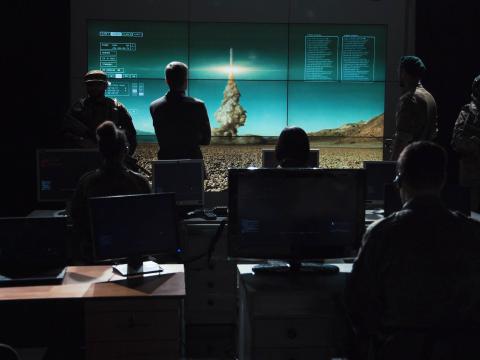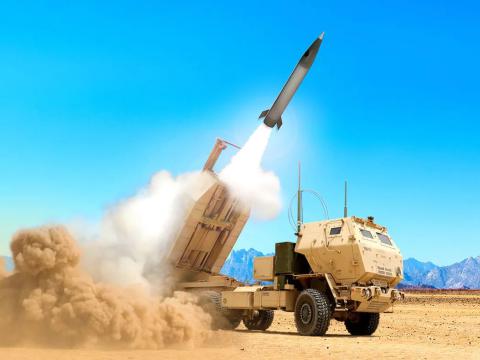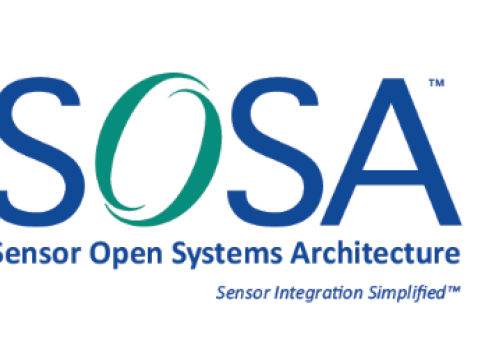Scandinavian Technology Blazes New Trail
Internet-based software serves as a template for next-generation command and control networks.
NetC4I software is a prototype system designed to connect legacy systems in an information-sharing network. Developed by Saab Systems as part of an initiative to field an operational network-centric capability, NetC4I is being used to test and evaluate new technologies and concepts.
A prototype command and control system is being used to develop future network-centric technologies for the Swedish military. The scalable, platform-independent software serves as a testbed to evaluate new applications, link legacy systems and develop new operational doctrine. This work is part of an ongoing effort to provide the Swedish armed forces with an advanced battle management capability.
Creating complex communications and data networks is not an easy task. It becomes more difficult when new technologies must work within existing infrastructures. The designers of Europe’s next generation command, control, communications, computers, intelligence, surveillance and reconnaissance (C4ISR) systems are working in an environment of shrinking defense budgets where the armed forces must do more with less. One way to achieve this feat is by linking legacy systems to make operations more efficient. This challenge is causing defense firms to focus on available technologies that can be readily modified to create future networks.
The Scandinavian firm at the center of this effort is Saab Systems, Järfälla, Sweden. A unit of the Saab Group, the company has developed a prototype C4ISR product called NetC4I. According to Mats Hamrin, Saab’s NetC4I product manager, work began in 2000 after the Swedish government requested a study of network-centric technologies. The military was undergoing a series of budget cuts at the time, and the effort’s goal was to examine the potential for cost savings and efficiencies in these applications. “We needed a tool that we could use to integrate all the older legacy systems to get a global situational picture,” he says.
NetC4I was developed to test an Internet-based command and control approach. It was the only system available at the time to demonstrate a network-centric C4ISR approach to Swedish military and government officials. Hamrin notes that Saab’s original plan was to develop a system to connect legacy equipment and to study how the technology worked so the government could create operating guidelines.
The Swedish government plans to have an operational network-centric C4ISR capability by the end of the decade, Hamrin offers. The military is working with Saab, Ericsson, Boeing, IBM and the Swedish Defense Material Administration to test a variety of technical approaches with the goal of having a definitive demonstration in 2006. In each of these steps leading to the final test, specific aspects of the system, such as security, situational picture and integration, are being explored and evaluated, he says.
NetC4I is built around the Java programming language. Because it was intended originally as a testbed for internal company use, the technology has not been certified for official use by the Swedish government, Hamrin shares. But the software has a variety of applications. In its current form, it is used as a framework to study and implement the integration of network-centric command and control (C2) systems.
The platform-independent program has a role-based user system that grants access privileges based on pre-assigned classifications. NetC4I also is designed for distributed operations by connecting command posts to the network and downloading data updates and services to remote users. The technology can be adapted to a variety of legacy systems such as air defense, battle management, vehicle command and control, surveillance, airborne and naval applications.
The software has drawn the attention of other governments as well. One system has been delivered to an Asian nation for evaluation. Hamrin explains that this particular customer has linked NetC4I to simulators and is using it to demonstrate and visualize potential network-centric methodologies for its armed forces.
Although it is a prototype, NetC4I can serve several important functions, Hamrin notes. It can be used to demonstrate C4ISR concepts, or it can be a platform itself. “You could basically ship it out tomorrow to a customer if he was willing to take the risk of it not being fine-tuned or certified. But right now we’re using it as a testbed,” he says.
Hamrin believes that NetC4I can be readied quickly for use by civilian governments, but some security issues must be resolved before it can be used by the military. The system’s security currently is provided by a smart card and a user personal identification number to establish a secure socket layer to a server. While this is adequate for police, fire and disaster management agencies, it is not enough for military sensor-to-shooter systems that require encryption. He adds that Saab has several research groups studying in parallel for both civil and military network-centric applications.
As a prototype, the company is using the system to test applications such as role-based management, information sharing and display tools that permit users to send and receive battle plans based on their clear ance within the system. Saab also has conducted research with Sweden’s National Defense College to develop a user interface and methodology for the system. “We have the technical know-how, but we need the end user input,” he says.
Customer feedback is important because the system cannot be too complicated for the average person to use. Citing an example from the wireless telecommunications industry, Hamrin notes that the Ericsson Company produced a sophisticated cellular telephone system, only to lose business to rival Nokia’s simpler and less expensive devices.
Saab’s engineers learned much during NetC4I’s development process. Hamrin explains that these lessons can be applied to full military or civilian systems. “You can sit down and talk and put things on paper, but theory and practice seldom coincide. Basically, you have to have something in order to do tests,” he observes.
For example, to create a joint or global situation picture, designers determined that different data refresh rates for land, sea and airborne C4ISR and C2 systems are necessary. This creates a challenge for system developers because a 15-second refresh rate for a land system may not be fast enough for other applications, he explains.
Another difficulty is assigning access levels and limits in a role-based information-sharing network. “If you have a joint operation or task force consisting of army, air and naval entities, how will you actually decide who gets to know what? How will you decide what is the least amount of information that users must share to carry out the mission? Do you want them to have all the data, or not?” Hamrin asks.
NetC4I users log into the system with a user name and password that automatically grant them varying levels of system access based on predefined roles. Once a role has been identified, it connects to a server via a secure socket layer to provide network access. The Internet-based aspect of the technology also permits different users to be identified with Internet protocol (IP) addresses. This arrangement can allow many users and systems to plug into the network. “It’s basically up to you if you want to have 10 different NetC4I roles on the same desktop computer with the same IP address,” he says.
Other design concerns include preventing users from being overwhelmed by too much information as well as bandwidth considerations. Hamrin adds that data prioritization is another issue related to role assignments and bandwidth allocation that Saab engineers are working on.
Although all echelons can use NetC4I, testing currently is being concentrated on higher command levels. Demonstrations have provided Swedish officers with access to real-time information and the ability to act on it immediately instead of waiting several hours or days for data. But a new doctrine is now necessary to prevent future commanders from being overwhelmed by rapid decision cycles, Hamrin explains.
NetC4I also can bridge the gap between civilian and military government agencies. Hamrin notes that whatever version the Swedish government selects will have to possess secure links to different organizations. Security remains an issue because a connection between a military agency and a civilian department may have to be via the open Internet.
But a joint military-civilian response is important to Saab’s designers because of the need for coordination during a natural disaster or other national emergencies. Hamrin says that a truly joint system should go beyond military land, sea and air units and extend to the civilian sector as well. “We’re taking a primarily civilian approach to this because we need more collaboration between civilian and military authorities than in the past,” he maintains.
Hamrin adds that in the event of a man-made or natural catastrophe, a system like NetC4I would provide civilian authorities with a picture of the situation and communications links to other agencies. This information would allow governments to effectively coordinate fire and police units, or to allocate military air and sea assets to provide medical equipment and food supplies to the affected area.
Web Resources
Saab Systems: www.saabsystems.se
Swedish National Defense College: www.fhs.mil.se
SaabTech: www.saabtech.se
Swedish Ministry of Defence: www.sweden.gov.se/sb/d/2060



